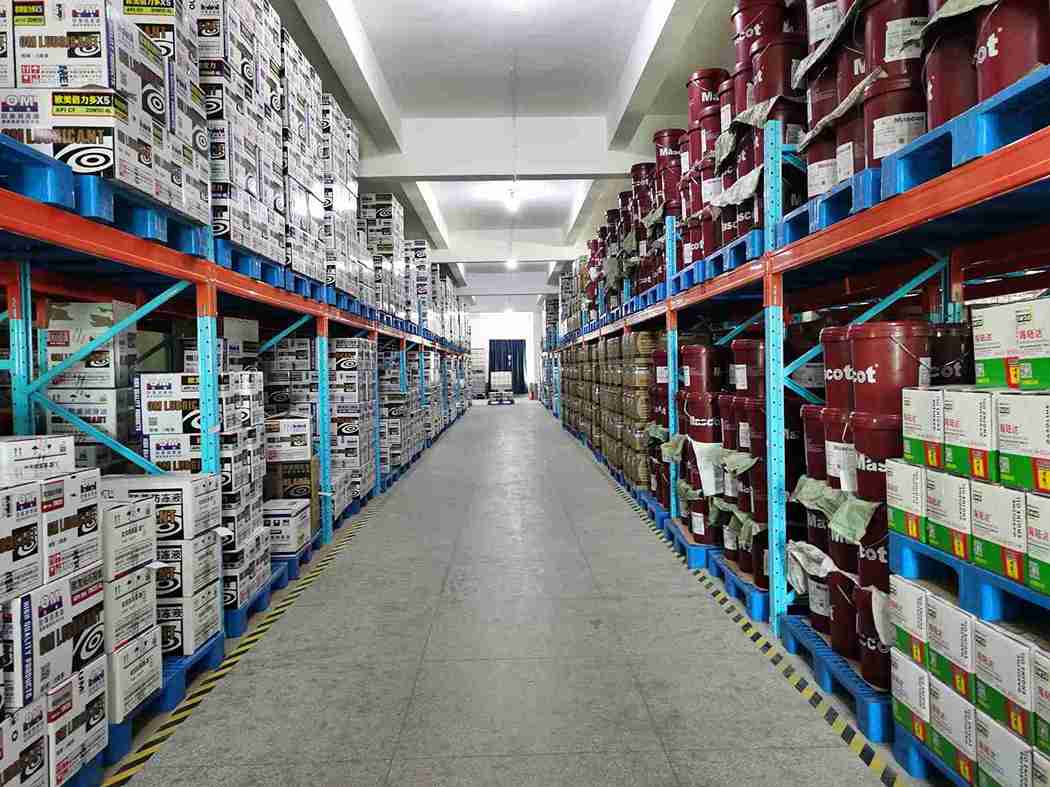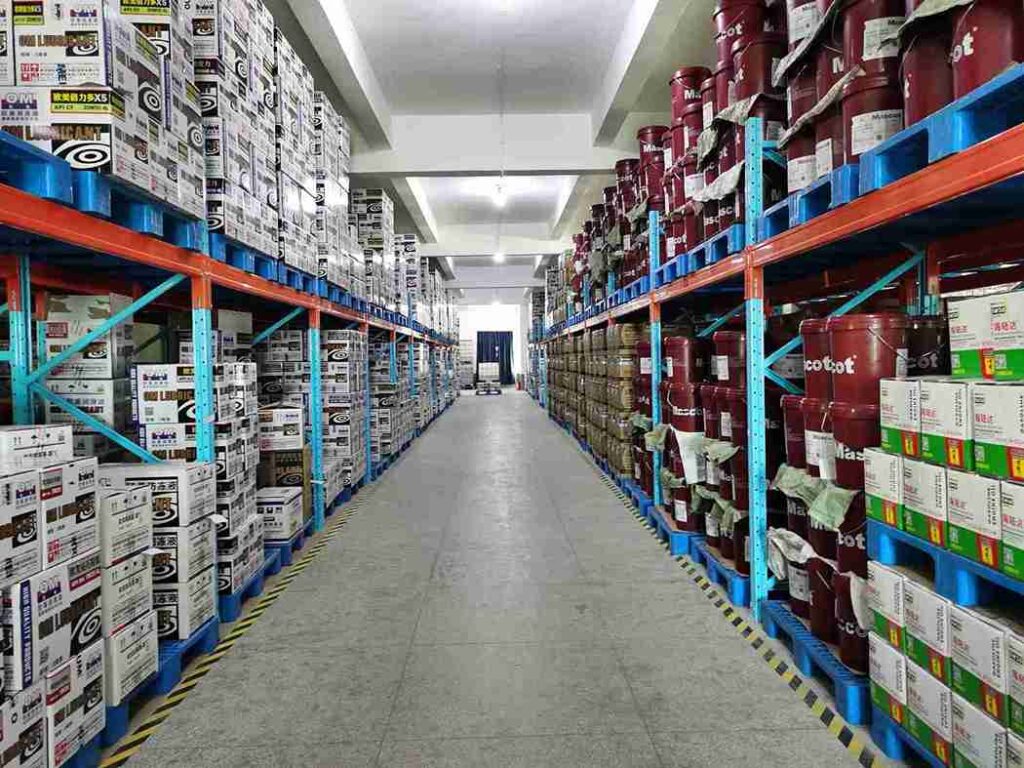📐 "First 50 Enterprise Queries Get Custom 3D Warehouse Design" Plan

Introduction: Revolutionizing Warehousing with Industrial Racking for Multi-Level Storage
In an era where warehouse space is at a premium, businesses must maximize every square foot to stay competitive. Industrial racking for multi-level storage has emerged as the most efficient way to dramatically increase storage capacity without costly expansions. By leveraging vertical space, warehouses can double or even triple their storage density, making industrial racking for multi-level storage a game-changer for logistics, manufacturing, and distribution centers.
But is it the right investment? Absolutely—when implemented strategically. This in-depth guide explores the benefits, types, cost factors, and best practices of industrial racking for multi-level storage, helping businesses determine whether mezzanine racking, pallet flow systems, or cantilever racks are the best fit for their operations.

1. Understanding Industrial Racking for Multi-Level Storage
1.1 What Makes Industrial Racking for Multi-Level Storage Unique?
Unlike traditional single-tier shelving, industrial racking for multi-level storage is engineered to stack inventory vertically, creating multiple accessible storage tiers. These systems are built with heavy-duty steel frames, reinforced beams, and durable platforms, ensuring they can handle extreme weights and frequent use.
Key features include:
-
Modular designs that adapt to changing warehouse needs.
-
High load-bearing capacity (up to 50,000 lbs per level).
-
Customizable configurations for different inventory types.
1.2 Industries That Benefit Most from Industrial Racking for Multi-Level Storage
-
E-commerce & 3PLs – High-density storage for fast-moving SKUs.
-
Automotive & Manufacturing – Heavy parts and raw material storage.
-
Cold Storage & Food Distribution – Maximizing limited refrigerated space.
-
Retail & Bulk Wholesale – Efficiently storing large quantities.
2. Top Types of Industrial Racking for Multi-Level Storage
Not all multi-level racking systems are the same. The best choice depends on inventory type, accessibility needs, and warehouse layout.
2.1 Multi-Tier Pallet Racking Systems
-
Selective Pallet Racking – Direct access to every pallet (ideal for high-turnover inventory).
-
Drive-In Racking – High-density storage with forklift-accessible lanes (best for bulk goods).
-
Push-Back Racking – LIFO system that maximizes depth storage.
2.2 Industrial Mezzanine Racking for Multi-Level Storage
-
Structural Mezzanines – Permanent elevated platforms for long-term expansion.
-
Freestanding Shelving Mezzanines – Modular, reconfigurable designs.
2.3 Cantilever Racking for Long & Bulky Items
-
Perfect for pipes, lumber, furniture, and rolled materials.
-
Open-front design allows easy loading with forklifts or cranes.
2.4 Mobile Racking Systems (Space-Saving Solutions)
-
Sliding carriages eliminate fixed aisles, increasing storage by up to 80%.
-
Best for low-turnover inventory in compact warehouses.
3. Why Industrial Racking for Multi-Level Storage is a Smart Investment
3.1 Unmatched Space Utilization
-
Converts unused vertical space into functional storage.
-
Reduces the need for costly warehouse relocations or expansions.
3.2 Faster Order Fulfillment & Improved Workflow
-
Zoned storage speeds up picking and reduces labor costs.
-
Clear categorization minimizes misplaced inventory.
3.3 Enhanced Safety & Compliance
-
Engineered to meet OSHA, ANSI, and RMI safety standards.
-
Reinforced guardrails, anti-slip surfaces, and seismic bracing available.
3.4 Long-Term Cost Efficiency
-
Lower real estate costs (no need for additional facilities).
-
Higher ROI compared to single-level alternatives.
4. Key Considerations Before Implementing Industrial Racking for Multi-Level Storage
4.1 Warehouse Ceiling Height & Floor Load Capacity
-
High ceilings (30+ ft)? Consider narrow-aisle or automated systems.
-
Low ceilings (10-20 ft)? Mezzanine racking may be the best fit.
4.2 Inventory Weight & Dimensions
-
Heavy pallets (2,000+ lbs)? Requires structural pallet racking.
-
Bulky, irregular items? Cantilever racks are ideal.
4.3 Future Scalability Needs
-
Modular designs allow for easy expansion.
-
Hybrid systems (e.g., mezzanines with selective racks) offer flexibility.
5. Installation & Maintenance Best Practices for Industrial Racking for Multi-Level Storage
5.1 Professional Installation is Non-Negotiable
-
DIY setups risk collapse—always hire certified installers.
-
Ensures compliance with safety regulations.
5.2 Routine Inspections Prevent Costly Failures
-
Check for beam deflection, rust, or loose bolts monthly.
-
Schedule annual structural audits.
6. The Future of Industrial Racking for Multi-Level Storage
6.1 Automation & Robotics Integration
-
Automated Storage & Retrieval Systems (AS/RS) for ultra-fast operations.
-
AI-powered inventory tracking for real-time stock management.
6.2 Sustainable & Eco-Friendly Designs
-
Recycled steel construction.
-
Energy-efficient warehouse layouts to reduce carbon footprint.
Conclusion: Is Industrial Racking for Multi-Level Storage Worth It?
Without a doubt. For warehouses struggling with limited space, rising costs, and inefficient layouts, industrial racking for multi-level storage is the ultimate solution. By maximizing vertical storage, improving safety, and reducing long-term expenses, it delivers exceptional ROI.
Before investing, businesses should:
✔ Assess warehouse dimensions and load requirements.
✔ Consult with industrial racking specialists for a tailored solution.
✔ Plan for future scalability to avoid costly retrofits.
FAQs About Industrial Racking for Multi-Level Storage
1. How much does industrial racking for multi-level storage cost?
Prices range from $50–$200 per sq ft, depending on materials and complexity.
2. Can existing warehouses be retrofitted with multi-level racking?
Yes, most systems can be custom-designed to fit current layouts.
3. What’s the maximum height for multi-level racking?
Some systems reach 40+ feet, but local building codes may apply.
4. How long does installation take?
Typically 2–6 weeks, depending on warehouse size and system complexity.
5. Are there financing options for industrial racking for multi-level storage?
Many suppliers offer lease-to-own or equipment financing plans.




